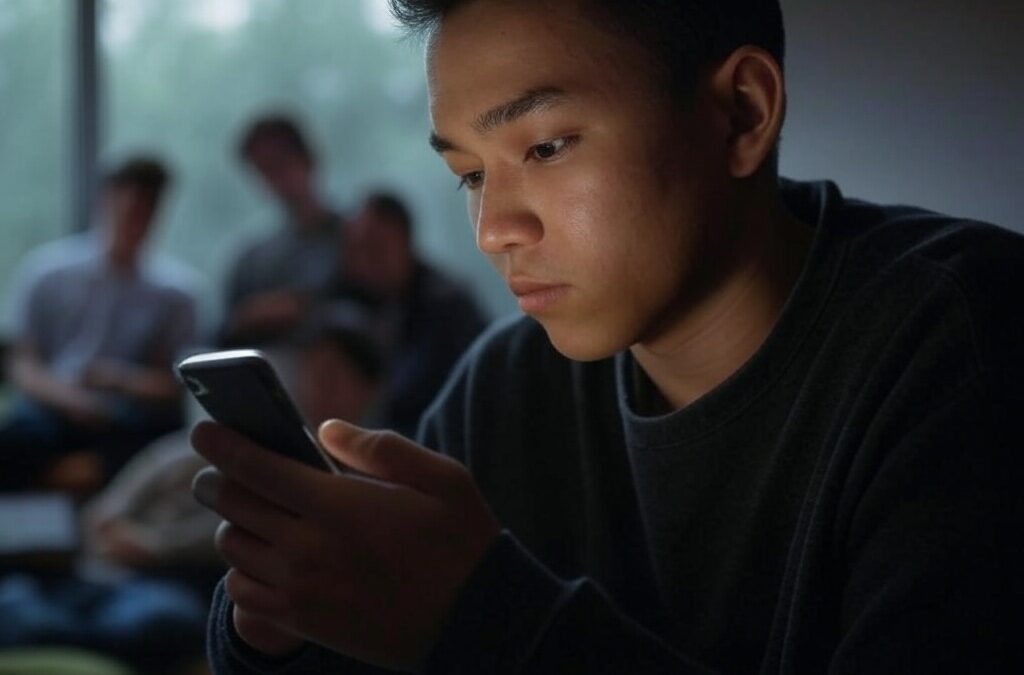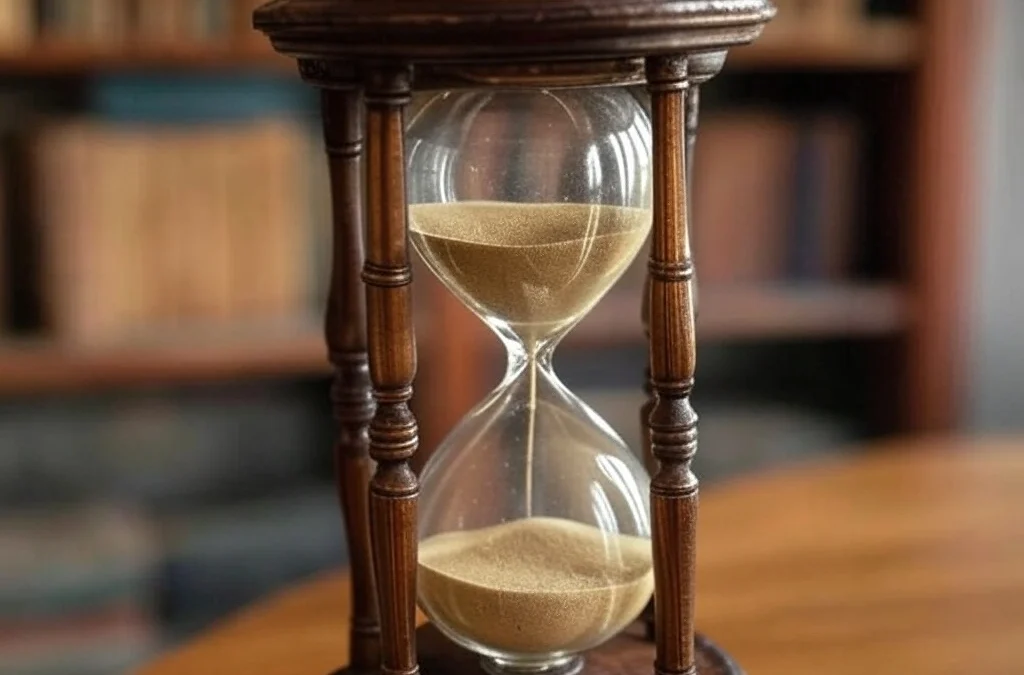In the modern world filled with constant stimuli, staying focused has become a considerable challenge. Distractions, in their various forms, permeate our daily lives and workplaces, often hindering productivity and impeding concentration. From the incessant ping of smartphone notifications to the ambient noise of a bustling office, these diversions come in many shapes and sizes. In this exploration of 30 distraction examples, we delve into the commonplace interruptions that can disrupt our workflow, hinder our creativity, and pose obstacles to maintaining a state of optimal focus. By identifying and understanding these distractions, we can better equip ourselves with strategies to navigate the sea of disruptions in our pursuit of enhanced productivity and concentration.
What is a Distraction?
“Distraction” refers to a phenomenon where an individual’s attention is diverted from a desired focus or task by external or internal stimuli, leading to decreased concentration and productivity. Common causes of distraction include technology, noise, multitasking, and personal worries. Effective strategies to mitigate distraction include creating a conducive environment, setting clear goals, and using focus-enhancing techniques. Distraction can impact various aspects of life, including work, learning, and personal relationships, making its management crucial for overall well-being and success.
In a broader sense, distraction can be understood as any event or factor that interrupts a person’s mental or physical focus on a specific task or activity. This interruption can be temporary or prolonged, depending on the nature and intensity of the distracting element. Distractions not only hinder task completion but can also reduce the quality of work or performance.
Types of Distractions:
- External Distractions: These include environmental factors such as noise, visual stimuli, interruptions by others, and digital notifications.
- Internal Distractions: These are mental or emotional factors such as stress, fatigue, daydreaming, or personal concerns.
The Best Distraction Examples
1. Smartphone Notifications
The incessant buzzing or pinging of a smartphone, indicating incoming messages, emails, or notifications, can disrupt concentration. The urge to check the phone diverts attention from the task at hand, breaking the flow of thought and potentially leading to a loss of focus on the work being done.
2. Noise
Whether it’s the clatter of construction, the hum of traffic, or the chatter in a bustling office, background noise poses a significant distraction. Such auditory interruptions make it difficult to immerse oneself in tasks, hindering the ability to concentrate and produce high-quality work.
3. Social Media
The allure of social media is powerful, and the temptation to endlessly scroll through feeds can be a considerable time sink. This distraction not only consumes time that could be spent productively but also disrupts the continuity of thought needed for focused work.
4. Multitasking
Despite the belief that multitasking is efficient, it often results in reduced concentration on each individual task. Juggling multiple activities simultaneously can lead to errors and lower overall productivity, as attention becomes divided among different demands.
5. Procrastination
Procrastination involves delaying important tasks in favor of more enjoyable or less critical activities. This habit can contribute to a lack of focus and productivity, as tasks pile up and deadlines loom closer.
6. Meetings
While meetings are essential for collaboration and communication, lengthy or unnecessary ones can disrupt workflow. The time spent in meetings could often be better utilized on more meaningful tasks, impacting overall productivity.
7. Cluttered Workspace
The visual distraction of a disorganized and messy workspace can impede concentration. A cluttered environment can make it harder to focus on the immediate task at hand and may contribute to a sense of overwhelm.
8. Emails
Constantly checking and responding to emails throughout the day can interrupt workflow. The continuous influx of messages can prevent individuals from delving deeply into their work, breaking the rhythm needed for concentrated, focused effort.
9. Internet Browsing
Aimless surfing on the internet, whether for news or entertainment, can be a major distraction. This habit can lead to wasted time and disrupt the thought processes necessary for sustained, meaningful work.
10. Hunger
Physical discomfort due to hunger can be a powerful distraction. It diverts attention away from tasks, making it challenging to concentrate, as the body signals the need for sustenance.
11. Personal Issues
Stress or personal problems occupy mental space, making it challenging to focus on work-related tasks. Emotional concerns can be intrusive, diverting attention away from the demands of the job.
12. Uncomfortable Environment
Physical discomfort, such as an uncomfortable chair or room temperature, can distract from work. The discomfort becomes a focal point, overshadowing the work at hand and affecting overall concentration.
13. TV or Streaming
Having a TV show or movie playing in the background can draw attention away from tasks. The visual and auditory stimuli compete with the demands of the work, reducing overall productivity.
14. Colleague Chatter
Noisy or disruptive colleagues in a shared workspace can be a constant source of distraction. The ambient noise of conversations or disruptions from nearby coworkers can make it challenging to maintain focus.
15. Intrusive Thoughts
Personal concerns or worries can intrude on concentration. These intrusive thoughts, whether related to personal relationships, finances, or other life matters, can make it challenging to stay focused on work tasks.
16. Gossip
Office gossip or personal conversations happening nearby can be distracting. The allure of overhearing discussions about colleagues or personal matters can draw attention away from work tasks, creating an environment of distraction and potentially contributing to workplace tension.
17. Overthinking
Spending excessive time dwelling on a particular problem or decision can impede progress on other tasks. Overthinking often leads to indecision, and the constant mental analysis can hinder the ability to move forward efficiently on other important tasks.
18. Lack of Sleep
Fatigue from insufficient sleep can significantly impact cognitive functions. The lack of energy and mental clarity resulting from inadequate rest can lead to decreased focus and productivity, making it challenging to perform at one’s best.
19. Unexpected Phone Calls
Unscheduled phone calls can disrupt workflow and shift attention away from planned tasks. The abrupt interruption can break concentration and may require additional time to regain focus on the original work.
20. Health Issues
Physical discomfort or illness can be distracting, making it difficult to concentrate on work. Pain, discomfort, or illness can occupy both the mind and body, affecting overall productivity and making it challenging to perform at one’s best.
21. Social Obligations
Thinking about upcoming social events or commitments can preoccupy the mind during work hours. Anticipating or planning for social engagements can divert attention away from immediate work responsibilities, affecting focus and productivity.
22. News Alerts
Constant updates and alerts about current events can draw attention away from tasks and contribute to information overload. The constant influx of news notifications can create a sense of urgency and distract individuals from their planned work.
23. Perfectionism
Striving for perfection in tasks can lead to overthinking and slow progress. The pursuit of flawlessness may result in spending excessive time refining details, potentially hindering overall productivity and the timely completion of tasks.
24. Daydreaming
Allowing the mind to wander off-topic can be a natural but distracting tendency. Daydreaming, especially when faced with monotonous or repetitive tasks, can divert attention away from the task at hand and reduce overall efficiency.
25. Technical Issues
Dealing with computer or equipment malfunctions can disrupt workflow and require troubleshooting time. Technical problems can be a significant source of frustration and distraction, interrupting the smooth flow of work.
26. Ambient Temperature
An uncomfortable room temperature can be distracting. When the environment is too hot or too cold, individuals may find it challenging to focus, leading to a decrease in overall productivity.
27. Traffic or Commute Issues
Concerns about transportation, traffic, or the commute to work can occupy mental space. Preoccupations with these issues can affect focus on tasks, especially at the beginning or end of the workday.
28. Unexpected Visitors
Colleagues or friends dropping by unexpectedly can disrupt planned work and shift attention away from tasks. Social interactions, while valuable, can be distracting when they occur without warning.
29. Workplace Politics
Office dynamics and politics can be mentally consuming, distracting individuals from their actual job responsibilities. Navigating complex interpersonal relationships and office politics can divert attention from the tasks that need to be completed.
30. Personal Projects
Juggling personal tasks during work hours, whether it’s planning an event or organizing personal matters, can detract from professional focus. Balancing personal and professional responsibilities can be challenging, and focusing on personal projects during work hours may hinder overall productivity.
Impact of Distraction
The pervasive nature of distraction in our modern world is reshaping the way we function, both as individuals and as a society. The impact of distraction extends beyond the fleeting moments of diverted attention, weaving its way into the very fabric of our daily lives, influencing everything from our productivity to our mental well-being.
At its core, distraction is an interruption, a break in our mental engagement with a task or thought process. It might seem benign, a mere hiccup in our day, but its cumulative effects are far-reaching. In the realm of work and academia, distraction emerges as a formidable adversary. The constant barrage of emails, social media notifications, and the lure of the internet can fracture our concentration, reducing the quality and quantity of what we achieve. The cost of these interruptions is not just measured in lost time but also in the diminished depth and creativity of our thoughts and ideas.
But the implications of distraction delve deeper, into the realm of cognitive function and learning. Studies have shown that when our attention is repeatedly hijacked, it becomes harder for us to focus even when we want to. Our brains, malleable and adaptive, start to favor this state of constant switching over deep, sustained attention. This shift can have profound implications for learning, particularly for young minds still developing their abilities to focus and absorb complex information.
Beyond productivity and cognitive development, distraction has a subtler, perhaps more insidious, impact on our mental health. In a world where distractions are just a screen tap away, they can become a means of avoiding uncomfortable thoughts or feelings, leading to a superficial engagement with our inner selves. This constant diversion can hinder our ability to process emotions and build resilience, leaving us less equipped to deal with life’s challenges.
However, it’s not all a bleak picture. The growing awareness of the costs of distraction is fostering a counter-movement. Techniques and tools to enhance focus and mindfulness are gaining popularity, reflecting a collective yearning for deeper engagement and presence in our tasks and relationships.
In essence, while the impact of distraction is multifaceted and significant, it also offers an opportunity. It invites us to reassess our relationship with technology, our work habits, and our approach to life’s quieter moments. In navigating these distractions, we may find pathways to more meaningful, focused, and reflective lives.
Does Distraction Have Importance at All?
Distraction, in its most basic form, is a shift in attention away from a primary task towards something else, often perceived as less relevant or important. But this shift, rather than always being a hindrance, can sometimes serve a vital purpose. For instance, distractions can provide a necessary break for the mind, especially when engaged in tasks that require prolonged concentration. These brief mental diversions can rejuvenate cognitive resources, allowing for a return to the task with renewed focus and energy.
Moreover, distractions can also be a source of creativity and problem-solving. When the mind wanders away from a focused task, it often engages in what psychologists call ‘diffuse thinking’ – a more relaxed and free-flowing thought process. This state can lead to unexpected connections and insights, fostering creative solutions that focused thinking might not yield. History is replete with examples of scientists and artists who stumbled upon breakthrough ideas while their minds were engaged elsewhere.
On a more personal level, distractions can provide an emotional respite, offering a momentary escape from stress or negative emotions. In moderation, such distractions can be a healthy coping mechanism, allowing individuals to regain emotional balance before confronting challenges.
However, the key lies in balance and awareness. Unchecked and excessive distractions, especially in the digital age, can lead to a fragmented attention span, reduced productivity, and impaired cognitive function. The challenge, then, is not to eradicate distraction but to manage it wisely – to harness its benefits while mitigating its downsides.
In conclusion, distraction, often maligned as merely an obstacle to productivity, holds its own importance. It provides mental breaks, fuels creativity, and can offer emotional relief. The goal should not be to eliminate distraction but to understand its role and find a harmonious balance that enriches both our work and our mental well-being.
Balancing Distractions
The key is finding a balance and using distractions strategically. Short breaks or moments of diversion can enhance overall productivity and well-being, but excessive and uncontrolled distractions can be detrimental.
Strategies for Managing Distractions
Time Management: This involves the deliberate organization of your day, allotting specific time slots for focused work and breaks. By scheduling periods for concentrated effort, you create a structure that minimizes the potential for distractions to derail your productivity. Equally important is designating time for breaks. These breaks are not just pauses but are integral to maintaining a sustainable work rhythm. They offer a chance for your mind to rest and reset, enhancing your ability to concentrate during work periods.
Prioritization: Effective prioritization is about identifying which tasks are most important and urgent, and addressing them first. This approach ensures that the most critical tasks receive your full attention and are less likely to be compromised by distractions. When you prioritize tasks, you create a clear roadmap for your day or week, which can reduce anxiety and the tendency to get sidetracked by less important activities.
Mindfulness: This is the practice of being fully present and engaged with the current task or moment. By cultivating mindfulness, you become more aware of when you are getting distracted and why. This awareness enables you to make conscious choices about your focus. Mindfulness also helps in recognizing the difference between a helpful break and a distraction that pulls you away from your goals. It’s about tuning into your mental state and understanding when a diversion is beneficial and when it’s time to buckle down and concentrate.
Create a Productive Environment: The physical and digital environment around you can significantly influence your susceptibility to distractions. Organizing your workspace to minimize external distractions (like noise, clutter, or interruptions) is crucial. This could involve setting up a quiet, tidy workspace, using tools like noise-canceling headphones, or controlling digital notifications. A well-organized environment can help in fostering a focused mindset, reducing the likelihood of being distracted.
Use Distractions Strategically: Not all distractions are detrimental. Sometimes, a brief diversion can be a strategic tool to rejuvenate your mind. The key is to engage in these distractions intentionally and for a limited duration. Activities like a short walk, listening to music, or a quick social media check can serve as a mental break, helping to prevent burnout. However, it’s essential to ensure that these breaks are controlled and don’t evolve into extended periods of unproductivity. The idea is to use distractions as a tool for maintaining mental agility, not as an escape from work.
In essence, distraction is important in various aspects of our lives. When managed effectively, it can contribute to creativity, stress relief, and overall well-being. However, uncontrolled distractions can negatively impact productivity and focus. Striking a balance and employing strategies to manage distractions is crucial for maintaining a healthy and productive work-life balance.
How Can I Minimize Distractions While Working from Home?
To minimize distractions while working from home, it’s crucial to create a dedicated workspace that is separate from personal areas, helping signal a clear boundary between work and leisure. Establishing a daily routine can enhance focus and productivity by providing structure to the workday. Additionally, utilizing productivity tools and apps can aid in managing tasks and staying organized. Setting clear communication with family members or housemates about designated work hours helps create an environment conducive to concentration, minimizing interruptions and fostering a more efficient and focused remote work experience.
Can Distractions Impact Mental Health?
Certainly, distractions can indeed impact mental health. When distractions become excessive and unmanaged, they contribute to heightened stress and mental fatigue. Continuous interruptions and a failure to engage in focused work can induce a sense of overwhelm, negatively influencing overall mental well-being. The constant struggle to regain focus amid distractions may lead to increased levels of stress, potentially affecting one’s emotional state and overall mental health. Establishing strategies to manage distractions becomes essential to maintaining a healthier and more balanced mental state during daily activities.
How Do Distractions Affect Productivity?
Unmanaged distractions wield a considerable impact on productivity by disrupting focus and fostering errors. The constant intrusion of distractions, whether prolonged or frequent, poses a substantial hindrance to progress on crucial tasks, ultimately diminishing overall efficiency. The cognitive effort required to shift attention back to the primary task after distractions can result in a loss of valuable time and a decline in the quality of work. Furthermore, the cumulative effect of these interruptions may lead to increased stress levels, further exacerbating the challenges associated with maintaining consistent and high-quality productivity. Addressing distractions through effective management strategies becomes imperative for sustaining optimal work performance.
Can Technology Be Both a Distraction and A Productivity Tool?
Undoubtedly, technology possesses the dual capacity to act as both a distraction and a productivity tool, contingent upon its utilization. The key factor lies in the manner in which technology is employed. Mindful and intentional use of technology, incorporating productivity-enhancing applications and establishing limits on notifications, can significantly contribute to efficiency and streamlined workflows. By leveraging technological tools judiciously, individuals can harness their potential to enhance focus, organization, and task management, turning what could be distractions into valuable assets for heightened productivity. It underscores the importance of adopting a conscious approach to technology usage to strike a balance between its distracting and productivity-boosting aspects.
The Most Popular on BitGlint

Zesty: 30 Examples & Definition and Meaning
Zestiness brings energy, excitement, and bold flavor to life. Whether in food, personality traits, or activities,...

20 Best Examples of Hope & Definition
In today's fast-paced world, hope serves as a beacon, guiding us through challenging times and towards brighter days....

30 Disappointment Examples & Definition
Disappointment is an emotional response we all experience when our hopes, expectations, or desires aren't met. It's...

20 Examples of Secondary Consumers in the Food Chain
Secondary consumers are animals that eat other animals—usually herbivores that feed on plants. They’re an important...

40 Social Dilemma Examples in the World & Real Life
Social dilemmas are everywhere. They shape the choices we make at work, in our communities, and even on a global...

20 Chronology Examples & Meaning
Chronology is something we use more than we realize. It shows up in conversations, in how we remember the past, and in...

30 Respect Examples & Definition
Respect is one of the foundation stones of healthy relationships and functioning societies. It involves showing...
Get Inspired with BitGlint

